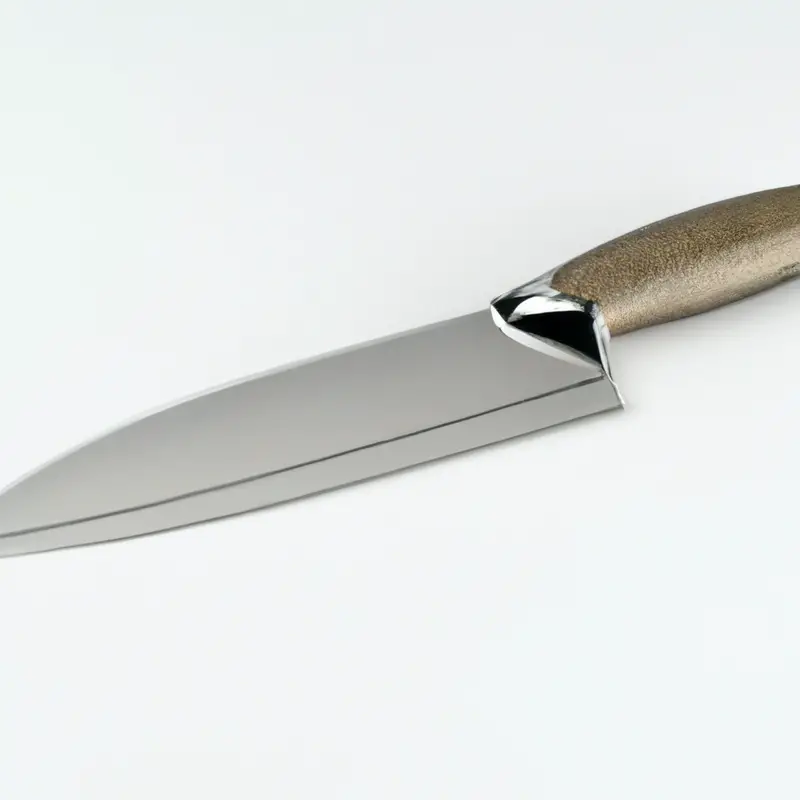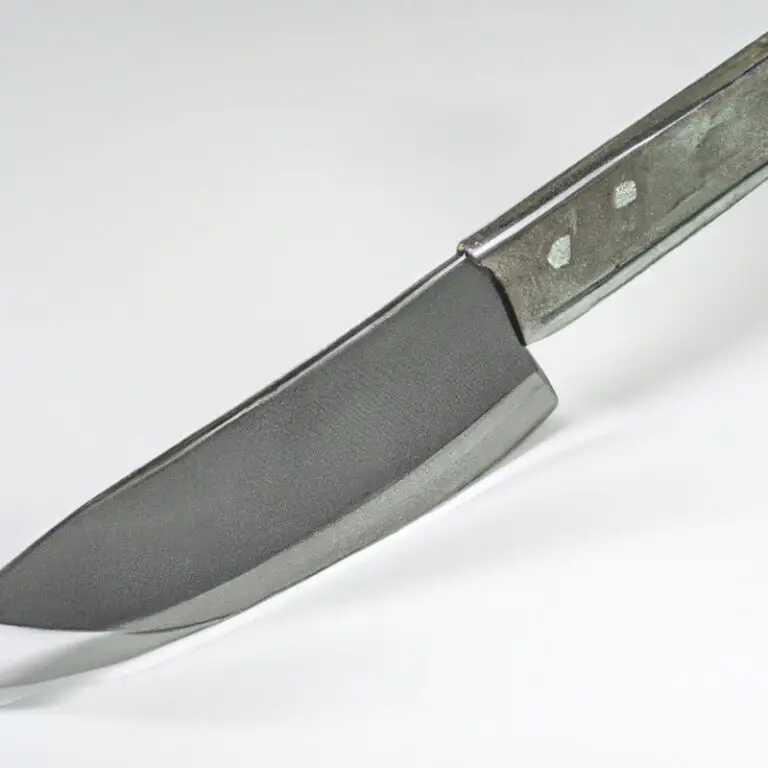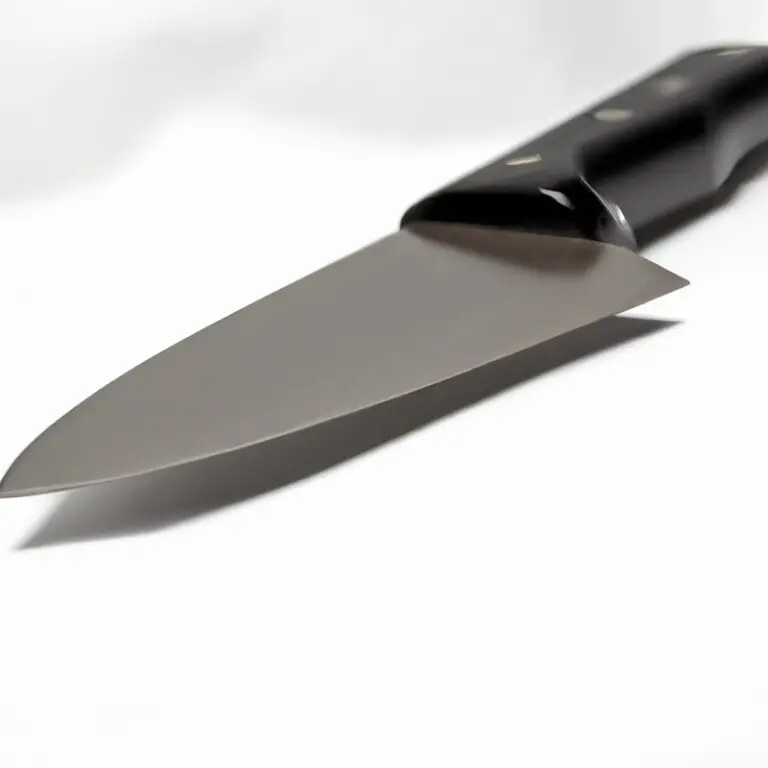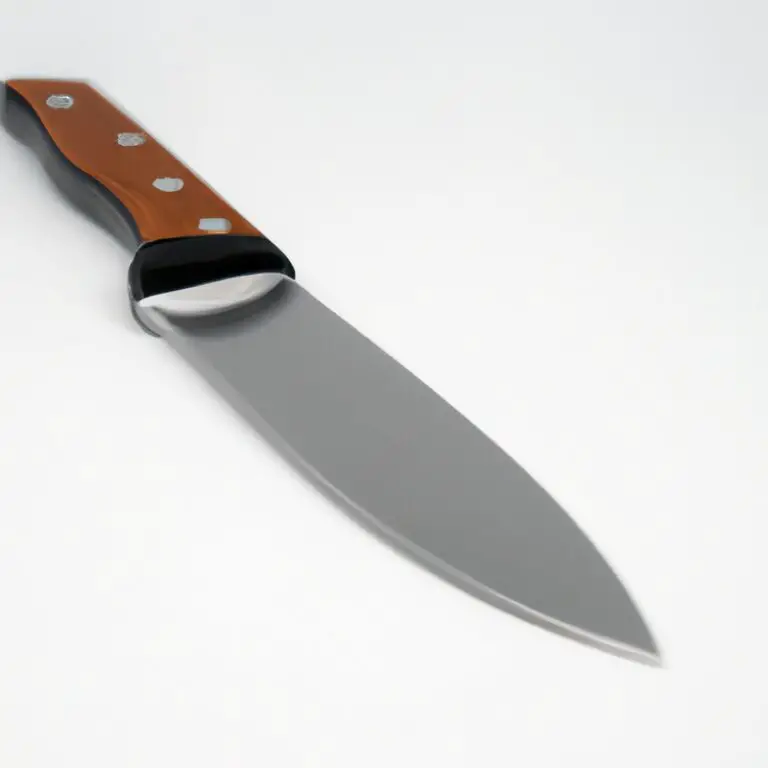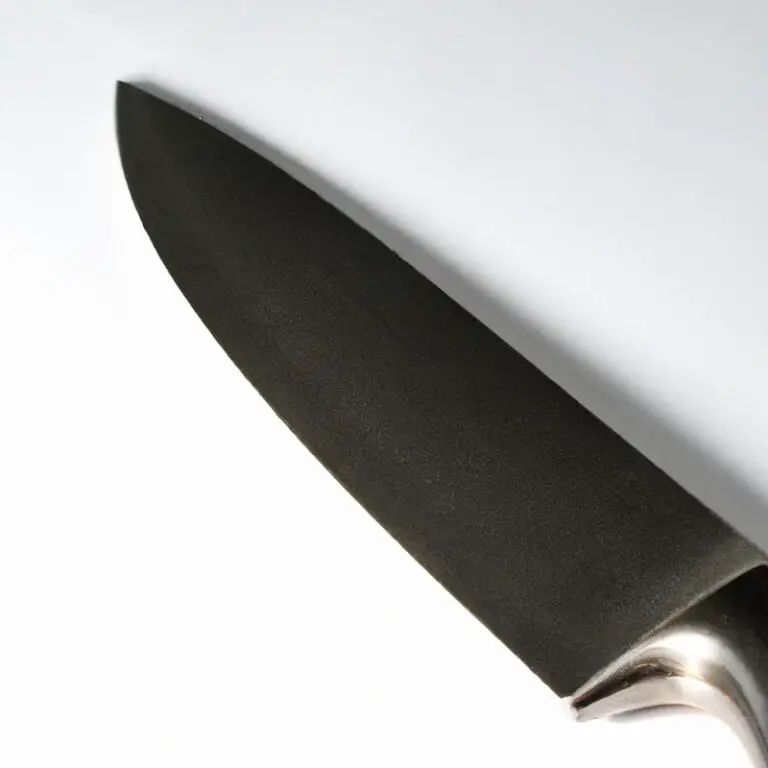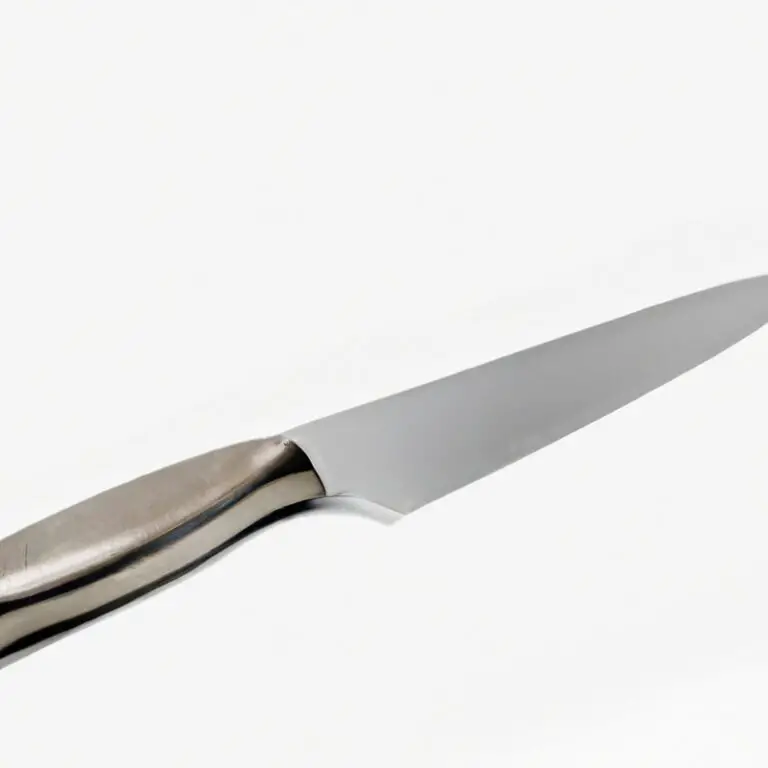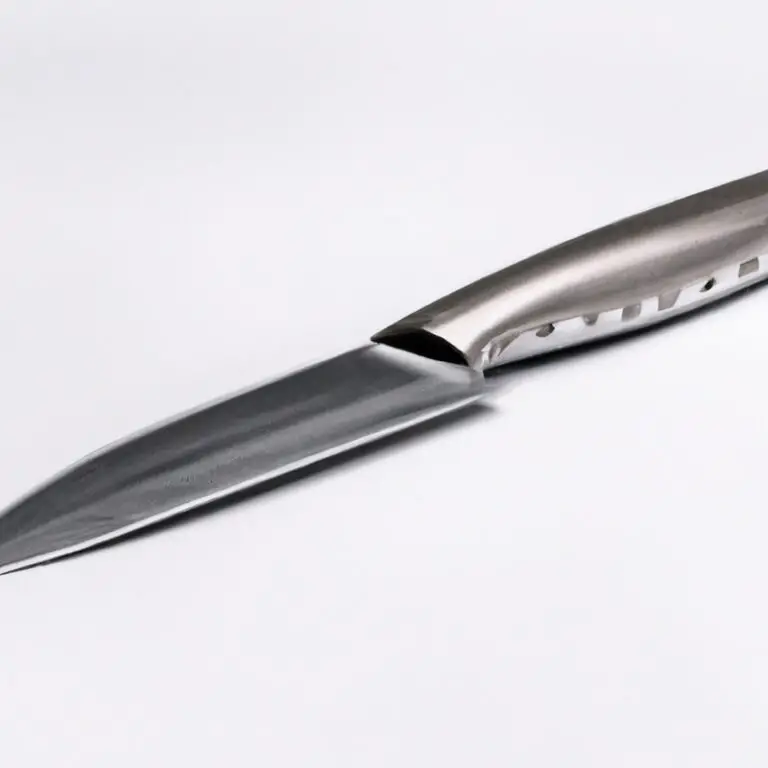How Do I Choose The Right Paring Knife For My Needs? – Expert Tips
Key Takeaways:
- Consider the size and shape of the blade for the specific task you will be using it for.
- Look for a comfortable handle that provides a good grip and control for precise cuts.
- Choose a high-quality, durable knife made from stainless steel for longevity and ease of maintenance.
- Carefully weigh the price against the features to select a knife that offers the best value for your needs.
Are you tired of struggling with a dull or uncomfortable paring knife in the kitchen? Choosing the right paring knife can make all the difference in your food preparation.
With so many options on the market, it can be overwhelming to decide which one is best for your needs.
That’s where I come in. As a seasoned home cook and kitchen gadget enthusiast, I’m here to guide you through the process of selecting the perfect paring knife.
In this article, we’ll delve into factors such as blade materials, handle design, and food types to help you make an informed decision.
Get ready to chop, slice, and dice like a pro with your new favorite kitchen tool.
| Consideration | Option 1 | Option 2 | Option 3 |
|---|---|---|---|
| Blade Material | Stainless Steel | High Carbon Stainless Steel | Carbon Steel |
| Blade Length | 2-3 inches | 3-4 inches | 4-5 inches |
| Blade Shape | Straight | Curved | Sheepsfoot |
| Handle Material | Plastic | Wood | Carbon Fiber |
| Price Range | $10-$20 | $20-$50 | $50-$100 |
| Brand | KitchenAid | Wusthof | Shun |
Types of paring knives
There are several types of paring knives that you can choose from, depending on your needs. The three main types are:
- Straight paring knives – these have a straight blade and are perfect for general everyday use such as peeling, trimming, and slicing fruits and vegetables.
- Bird’s beak paring knives – these have a curved blade, resembling a bird’s beak. They are ideal for intricate tasks such as peeling, shaping, and carving round fruits and vegetables.
- Sheep’s foot paring knives – these have a curved blade with a flat edge, which is great for cutting and trimming with precision. They are perfect for tasks that require a straight cut, such as trimming the fat from meat or fish.
Choosing the right type of paring knife can make a huge difference in the efficiency and accuracy of your cooking. Consider your needs and the tasks you’ll be undertaking before making a selection.
Understanding blade materials
The blade material is a crucial factor to consider when choosing a paring knife as it determines the knife’s durability, sharpness, and ease of maintenance. There are various blade materials to choose from, including high-carbon stainless steel, carbon steel, and ceramic.
High-carbon stainless steel is the most common blade material, known for its sharpness and resistance to rust and staining.
Carbon steel is easier to sharpen and maintains its sharpness for longer, but it is prone to rust and staining. Ceramic blades are incredibly sharp and durable, but they are brittle and prone to chipping.
Ultimately, the choice of blade material depends on personal preference and intended use.
However, it is essential to ensure that the blade is made from high-quality materials to guarantee a long-lasting and reliable paring knife.
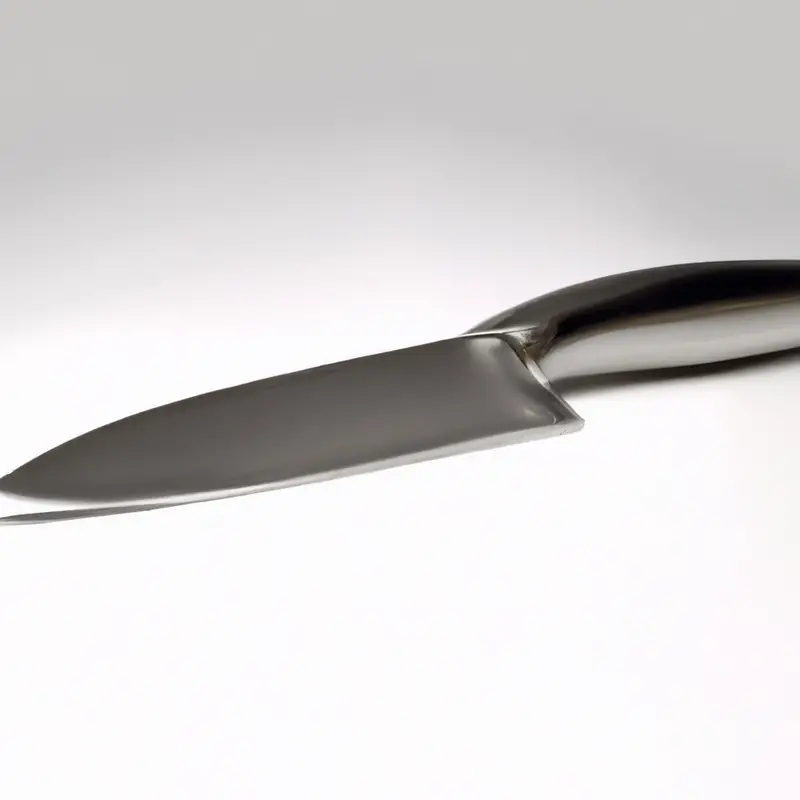
Blade length and flexibility
Blade length and flexibility are crucial factors to consider when choosing a paring knife. A typical paring knife blade ranges from 2.5 inches to 4 inches, with a shorter blade being more precise and a longer blade providing more versatility.
Paring knife blades can be flexible or stiff, with each having its advantages.
A flexible blade allows for more maneuverability around curved surfaces, making it ideal for delicate tasks like peeling fruits and vegetables. A stiffer blade, on the other hand, is better suited for tasks that require more force, like removing the skin from larger fruits and vegetables or trimming meats.
It’s important to note that blade flexibility can vary even within the same knife model, depending on the blade’s thickness and the angle of the edge.
Therefore, it’s essential to select a paring knife with a blade that best suits your needs and preferences. A paring knife with a short, flexible blade is ideal for precision tasks, while a longer, stiffer blade is better for more robust kitchen duties.
Ultimately, the choice comes down to personal preference and the specific tasks you need the knife to perform.
Handle design and grip
Handle design and grip play a crucial role in choosing the right paring knife. When selecting a paring knife, look for a handle that offers a comfortable grip with good balance.
The handle should also provide a secure hold, even if your hands are wet.
Handle materials range from plastic to wood, with various shapes and textures. It’s best to choose a handle that feels secure in your hand and is easy to grip.
A slightly textured handle will offer better grip, but make sure it’s not too rough to hold or uncomfortable to touch.
In addition, consider the weight of the handle. The handle’s weight should be balanced with the blade for easy handling.
A too-heavy handle may cause wrist fatigue and make the knife difficult to use.
Lastly, consider the tang, or the part of the blade that extends into the handle. A full tang, which runs the entire length of the handle, offers better balance and durability than a partial tang.
Overall, a well-designed handle and grip ensures comfortable use and easier handling of the paring knife.
Maintenance and sharpening tips
To keep your paring knife sharp and in top condition, it’s important to properly maintain and sharpen it. Here are some tips:
- Hand wash your knife with warm, soapy water immediately after use and dry it with a soft towel to prevent rust and damage.
- Regularly sharpen your knife with a sharpening stone or a honing steel to maintain its sharpness and edge.
- Store your knife in a knife block or sheath to protect the blade from damage and to prevent accidents.
- Avoid cutting on hard surfaces like glass or metal, which can dull the blade quickly.
By following these maintenance and sharpening tips, your paring knife will stay sharp and effective for all your kitchen needs.
Factors to consider for different types of food
When choosing a paring knife, it’s important to consider the types of food you’ll be working with. Here are a few factors to keep in mind:
- Size and shape: Consider the size and shape of the food you’ll be cutting. For example, if you frequently work with small fruits like strawberries, you may want a smaller blade that can maneuver around the curved edges easily.
- Firmness: The firmness of the food should also be taken into account. For softer fruits and vegetables, a knife with a sharper blade will work best. A slightly serrated blade can be helpful when cutting through tougher produce like pineapples.
- Precision: If you need to make very precise cuts, such as when creating decorative garnishes or trimming meat, you may need a paring knife with a longer, more slender blade.
- Frequency of use: If you’ll be using your paring knife frequently, you may want to invest in a higher-quality model. However, if you only plan on using it occasionally, a more budget-friendly option may suffice.
Keep these factors in mind when selecting a paring knife to ensure that it meets your specific needs.
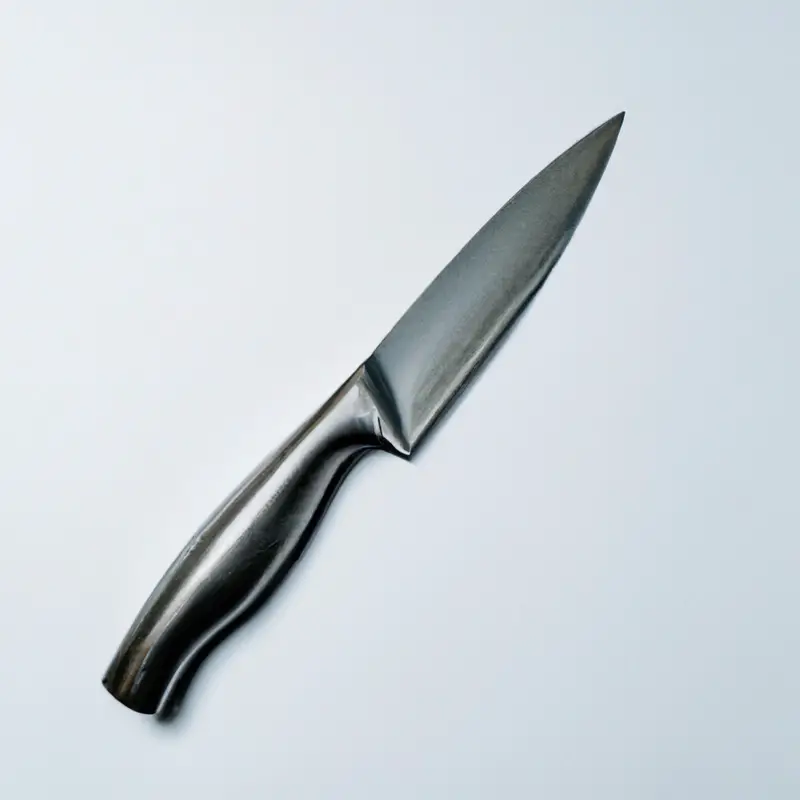
Budget-friendly options
When looking for a budget-friendly paring knife, there are some important factors to consider. First, look for blades made from high-carbon stainless steel, which is durable and requires less sharpening.
Secondly, consider opting for a shorter blade length, as it is easier to maneuver and control for finer cuts.
Lastly, finding a paring knife with a comfortable handle can make all the difference in ensuring a safe and comfortable grip. Some reliable and affordable options include the Victorinox Fibrox Pro Paring Knife and the Wüsthof Pro Paring Knife.
It is important to invest in a quality paring knife, but with these budget-friendly options, you can still get a reliable and effective knife without breaking the bank.
Ergonomic considerations for comfortable use
Ergonomic considerations are crucial for ensuring comfortable and safe use of a paring knife. A comfortable grip is necessary for maximum control and precision while cutting.
Knives with ergonomic handles that are easy to grip and hold for extended periods without causing discomfort are ideal.
A balanced knife with a full tang construction and a comfortable finger guard is recommended. The weight of the knife should also be considered.
Heavy knives can cause fatigue in the hand and wrist, while lightweight models may not offer enough control.
The blade’s length should correspond to the user’s hand size, and the handle should fit comfortably in the hand. It is crucial to choose a knife that best suits your grip style and hand size.
The wrong knife can cause pain, discomfort, or even injury.
Gripping the knife firmly without squeezing and using a back-and-forth motion while peeling can help prevent strain and wrist fatigue. Consider the handle design, weight, balance, blade length, and comfort level before purchasing a paring knife.
It is essential to choose a knife that feels comfortable and safe in your hand, enabling you to work with precision and control, minimizing the risk of an accident.
Choosing the right paring knife for your cooking style
When choosing the right paring knife for your cooking style, it is essential to consider the tasks you will be performing with the knife. For delicate tasks such as peeling fruits and vegetables, a shorter blade length and a more flexible blade will be suitable.
However, for tougher tasks like trimming meats or poultry, a longer and stiffer blade is necessary.
Additionally, the handle design and grip should suit the size of your hands and provide a comfortable grip for extended periods of use. Keeping your budget and maintenance needs in mind, choose a paring knife with a blade material that suits your requirements.
Lastly, consider the ergonomics of the knife, as it can significantly impact your overall cooking experience.
With these factors in mind, you can choose the right paring knife for your needs and transform your culinary journey.
Final Verdict
Choosing the right paring knife is a crucial decision for any kitchen enthusiast. By understanding the different types of paring knives, the significance of blade materials, blade length and flexibility, handle design and grip, maintenance, and sharpening tips, you can make an informed choice that will not only make your prep work easier but will also ensure your safety.
Whether you’re a home cook on a budget or a professional chef looking to invest in a high-quality instrument, there’s a paring knife out there for everyone.
So, take into account your cooking style, ergonomic considerations for comfortable use, and factors to consider for different types of food, and invest in the right tool for your needs. Remember, a good paring knife is not just a purchase; it’s an investment in your culinary journey.
Trust in the information presented and let it guide you to the right decision.
With all the expert reviews and recommendations out there, you’re sure to find the perfect paring knife to elevate your cooking game.

